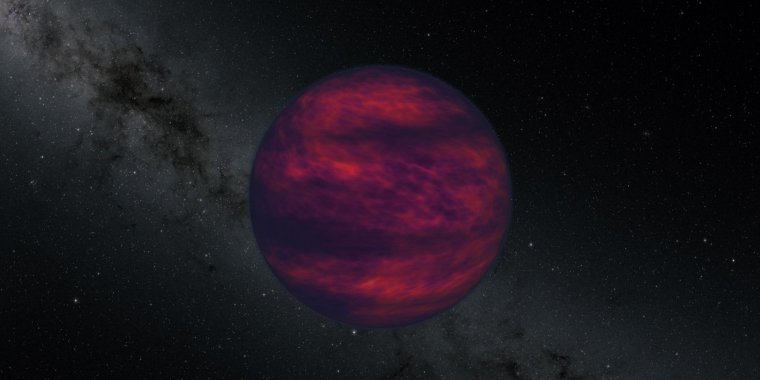| News / Space News |
NASA Measures Wind Speed on a Brown Dwarf
For the first time, scientists have directly measured wind speed on a brown dwarf, an object larger than Jupiter (the largest planet in our solar system) but not quite massive enough to become a star.

This artist's concept shows a brown dwarf. Image credit: NASA/JPL-Caltech
For the first time, scientists have directly measured wind speed on a brown dwarf, an object larger than Jupiter (the largest planet in our solar system) but not quite massive enough to become a star.
To achieve the finding, they used a new method that could also be applied to learn about the atmospheres of gas-dominated planets outside our solar system.
Officially named 2MASS J10475385+2124234, the target of the new study was a brown dwarf located 32 light-years from Earth - a stone's throw away, cosmically speaking.
The researchers detected winds moving around the planet at 1,425 mph (2,293 kph). For comparison, Neptune's atmosphere features the fastest winds in the solar system, which whip through at more than 1,200 mph (about 2,000 kph).
Measuring wind speed on Earth means clocking the motion of our gaseous atmosphere relative to the planet's solid surface. But brown dwarfs are composed almost entirely of gas, so "wind" refers to something slightly different.
The upper layers of a brown dwarf are where portions of the gas can move independently.
At a certain depth, the pressure becomes so intense that the gas behaves like a single, solid ball that is considered the object's interior. As the interior rotates, it pulls the upper layers - the atmosphere -along so that the two are almost in synch.
In their study, the researchers measured the slight difference in speed of the brown dwarf's atmosphere relative to its interior. With an atmospheric temperature of over 1,100 degrees Fahrenheit (600 degrees Celsius), this particular brown dwarf radiates a substantial amount of infrared light.
Coupled with its close proximity to Earth, this characteristic made it possible for Spitzer Space Telescope to detect features in the brown dwarf's atmosphere as they rotate in and out of view. The team used those features to clock the atmospheric rotation speed.
To determine the speed of the interior, they focused on the brown dwarf's magnetic field. A relatively recent discovery found that the interiors of brown dwarfs generate strong magnetic fields.
As the brown dwarf rotates, the magnetic field accelerates charged particles that in turn produce radio waves, which the researchers detected with the radio telescopes in the Karl G. Jansky Very Large Array in New Mexico.
The new study is the first to demonstrate this comparative method for measuring wind speed on a brown dwarf. To gauge its accuracy, the group tested the technique using infrared and radio observations of Jupiter, which is also composed mostly of gas and has a physical structure similar to a small brown dwarf.
The team compared the rotation rates of Jupiter's atmosphere and interior using data that was similar to what they were able to collect for the much more distant brown dwarf.
They then confirmed their calculation for Jupiter's wind speed using more detailed data collected by probes that have studied Jupiter up close, thus demonstrating that their approach for the brown dwarf worked. (NASA)
YOU MAY ALSO LIKE





